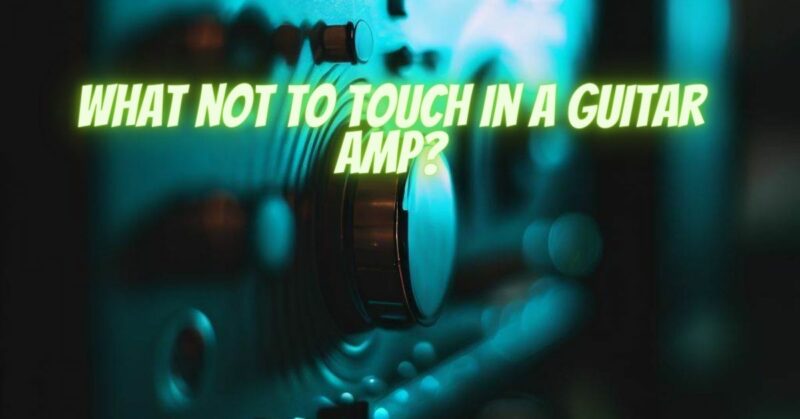Guitar amps are complex pieces of equipment that can be dangerous if not handled properly. There are a few things that you should never touch inside a guitar amp, even if you are experienced with electronics.
The power transformer: The power transformer is the large metal box that is located near the power cord. It is responsible for converting the AC power from the wall outlet to the DC power that the amp uses. The power transformer is very dangerous, and it can deliver a fatal shock if you touch it.
The filter capacitors: The filter capacitors are located near the power transformer. They store the DC power that is generated by the power transformer and provide a stable power supply for the amp’s circuits. The filter capacitors are also very dangerous, and they can deliver a fatal shock if you touch them.
The output tubes: The output tubes are located in the amp’s power amplifier section. They amplify the signal from the guitar and produce the sound that you hear. The output tubes are very hot, and they can cause serious burns if you touch them.
The input jacks: The input jacks are located on the front panel of the amp. They are used to connect the guitar to the amp. The input jacks are not dangerous, but you should avoid touching them if the amp is turned on.
The speaker terminals: The speaker terminals are located on the back panel of the amp. They are used to connect the amp to the speakers. The speaker terminals are not dangerous, but you should avoid touching them if the amp is turned on.
If you are not sure what you are doing, it is always best to have a qualified technician service your guitar amp.
Here are some additional tips for handling a guitar amp safely:
- Always unplug the amp from the power outlet before you start working on it.
- Use a grounding strap to protect yourself from electrical shock.
- Be careful not to touch the power transformer, filter capacitors, or output tubes.
- Avoid touching the input jacks and speaker terminals when the amp is turned on.
- If you are not sure what you are doing, have a qualified technician service your amp.


